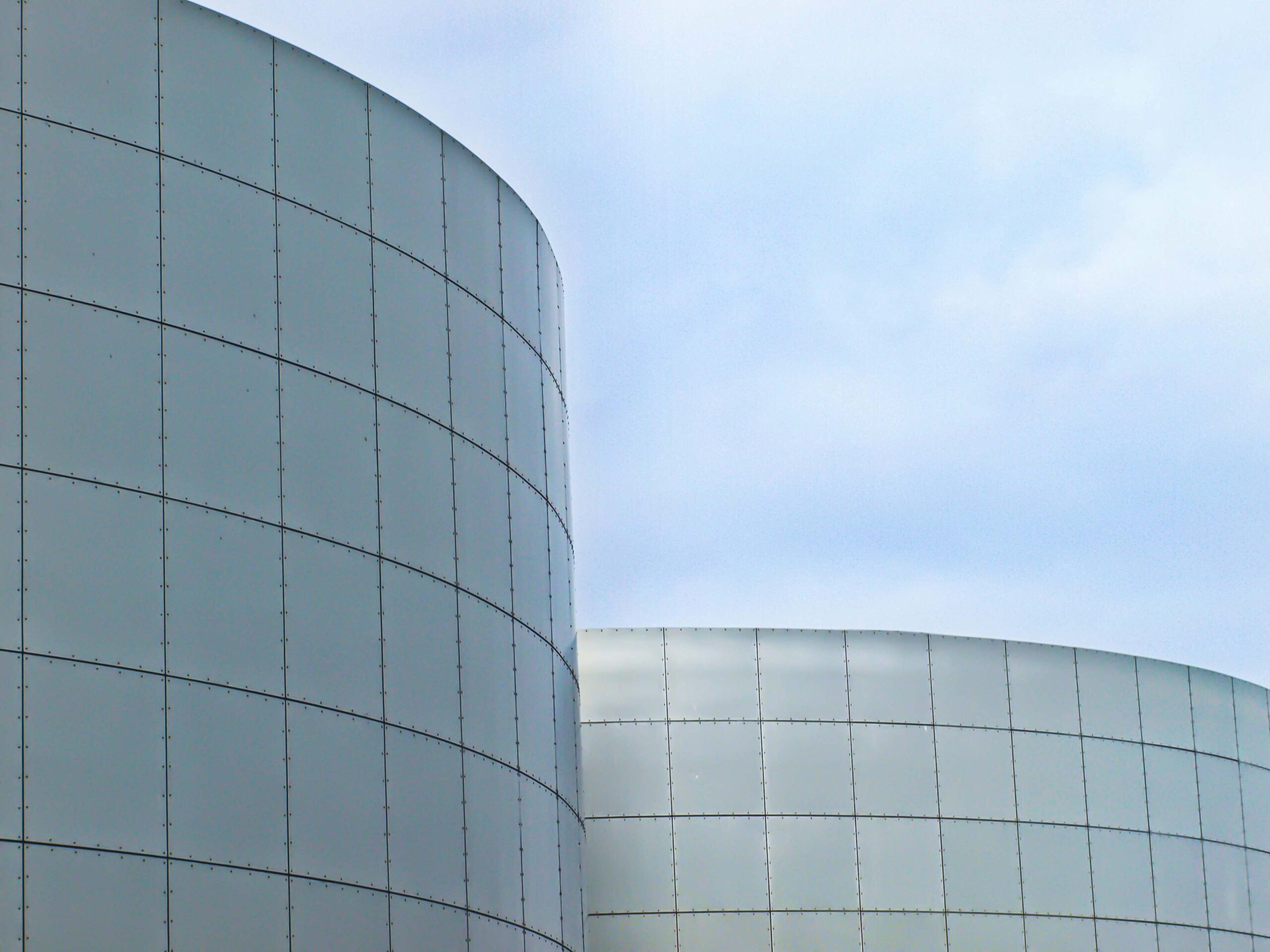Investigating Advancements in Alloy 3D Printing Tech
The global market for 3D printed metal is predicted to rise to $7.9 billion by 2028. This rapid increase is fueled by notable developments in metal 3D printing technology. These innovations are reshaping how we manufacture intricate pieces and structures. Fields such as aviation and medical field are at the forefront, leveraging 3D printing alloy to create detailed, tailored components with unparalleled exactness.
This piece examines the cutting-edge methods driving this shift. It uncovers how 3D printer metal printer is essentially modifying production techniques. By examining these advancements, we understand into the future of manufacturing and the vast promise of this innovation.
Grasping Metal 3D Printing
Alloy 3D printing is transforming the fabrication field by allowing the creation of complex metal pieces with unparalleled precision and flexibility. This technology enables for the layer-by-layer fabrication of detailed pieces, providing notable gains over conventional techniques.
What is Alloy 3D Printing?
Metal 3D printing, or alloy 3D printing, utilizes diverse technologies to produce metal pieces. A 3D printer alloy printing device works by placing substance incrementally, directly from digital models. This technique supports the creation of complex geometries and personalized patterns.
The Development of Metal 3D Printing
The history of metal 3D printing commenced in the end of the 20th century with initial designs of rudimentary designs. Over time, developments have expanded its potentials, shifting from basic prototypes to high-performance parts. Currently, metal 3D printing is employed in space, automotive, and healthcare industries, due to ongoing advancements.
Key Benefits of Alloy 3D Printing
Utilizing a metal 3D printer provides various advantages over traditional manufacturing methods. These include:
- Flexibility: The capability to manufacture complex forms and detailed forms that traditional techniques cannot attain.
- Lowered Waste: Alloy 3D printing utilizes material economically, reducing waste during the manufacturing method.
- Personalization: Easily manufacture tailored parts, allowing swift prototype creation and bespoke products across multiple fields.
- Pace: Quicker fabrication times from design to final product, optimizing the production sequence.
These advantages make alloy 3D printing a compelling solution for businesses aiming to improve and boost their manufacturing abilities.
The Development of Alloy 3D Printing Technologies
The progression of metal 3D printing has been remarkably extraordinary, moving from basic origins to the advanced methods we now observe. This path has focused on improving the complexity of *metal 3D printed parts*, refining the use of *3D printing metal powder*, and broadening the availability of *metal 3D printing solution* providers.
Pioneering Developments
At its start, alloy 3D printing was defined by trial approaches and a restricted selection of substances. The first significant advancements were laser sintering and electron beam fusion. These techniques paved the way for more stable manufacturing of metal pieces. Initial users harnessed these techniques to manufacture complex forms that traditional manufacturing techniques couldn’t handle.
Modern Technological Trends
Nowadays, the developments in alloy 3D printing are revolutionizing production. The concentration is on speeding up printing methods, enhancing material properties, and reducing expenditures. The creation of cutting-edge *3D printing metal powder* has allowed to create durable and exact *metal 3D printed pieces*. Additionally, the expansion of *metal 3D printing solution* providers has made advanced production attainable to companies of all sizes.
Powder Bed Fusion Techniques in Alloy 3D Printing
Powder Bed Fusion technologies have transformed alloy 3D printing, providing high exactness and exceptional material density. This method uses a laser to fuse fine material particles, including the advanced alloy powder bed fusion technique. It is proficient in creating intricate forms that traditional manufacturing methods cannot accomplish.
Two main PBF technologies stand out: Selective Laser Melting and Direct Metal Laser Sintering. Each offers unique benefits and is essential in fields like space, vehicle, and medical manufacturing.
- Selective Laser Melting: Using a powerful light source, it completely fuses the alloy particles, resulting in pieces with superior material traits.
- Laser-Based Sintering: This process uses a light source to precisely melt alloy grains, ideal for manufacturing parts with complicated internal designs and excellent precision.
DMLS is favored for intricate patterns and quick model development, ensuring efficiency without forgoing quality. Despite Powder Bed Fusion techniques present significant expenses and extended manufacturing speeds, their precision and material efficiency are driving their use across industries.
Here is a detailed comparison:
| Element | Laser Sintering | Laser-Based Sintering |
|---|---|---|
| Laser Type | Powerful laser | Fiber laser |
| Material Efficiency | Superior | Average to Superior |
| Operational Versatility | Highly flexible | Extremely versatile |
| Main Industries | Aviation, Car, Medicine | Aviation, Car, Healthcare |
| Standard Materials | Aluminum, Ti, Alloy Steel | Aluminum, Titanium, Steel |
Both alloy powder bed fusion technologies are advancing, offering enhanced effectiveness and material capabilities. As tech develops, the potential of Powder Bed Fusion in metal 3D printing is set to expand, fueling progress across multiple sectors.
Uses of Laser Sintering
SLM has transformed the metal 3D printing sector, providing unparalleled precision and flexibility. It facilitates the production of complex constructions with simplicity. This segment examines how Laser Sintering is applied across diverse industries, highlighting its notable impact.
Laser Sintering in Space Industry
In aviation, SLM is essential for producing complex engine components such as turbine components and fuel tips. It facilitates for substantial weight savings while preserving structural integrity. This produces enhanced and reduced weight planes.
By boosting energy efficiency and cutting emissions, Laser Sintering aligns with sustainability goals in the aerospace sector.
Healthcare Implementations of Selective Laser Melting
The medicine industry greatly profits from SLM, especially in crafting tailored prosthetics and prosthetics. Doctors can now produce items personalized to specific patients, providing a better comfort and functionality. This results in improved medical outcomes.
Custom prosthetics, such as those for skeletal and tooth needs, are created to fit the individual anatomy of each person. This demonstrates the flexibility of alloy 3D printing in boosting medicine.
| Sector | Implementations | Benefits |
|---|---|---|
| Aviation | Engine components, turbine blades, fuel injectors | Mass reduction, improved fuel efficiency, improved performance |
| Medicine | Tailored medical devices, replacement parts | Personalized patient care, improved fit and operation, reduced recovery time |
Advantages of Electron Beam Fusion
Electron Beam Fusion is a cutting-edge technique in metal 3D printing. It uses a concentrated electron beam to fuse alloy particles in a vacuum environment. This method provides several key advantages.
Reducing Oxidative Degradation:
One major gain of EBM is its vacuum operation, which significantly reduces material oxidation. This is essential for substances like titanium and its alloys. These are vital in aerospace and healthcare applications due to their sensitivity.
Improved Material Characteristics:
Functioning in a vacuum environment not only keeps the material clean but also boosts its material traits. Electron Beam Melting-produced components often show improved material strength and durability. These traits are vital for applications under high stress.
Complex Design Potentials:
EBM is exceptional in producing intricate designs and intricate forms. The precision of the electron ray enables intricate and tailored parts. This is more than what traditional production can accomplish.
| Factor | Gain |
|---|---|
| Oxidation Minimization | Reduced oxidation because of vacuum operation |
| Substance Purity | Augmented because of vacuum environment |
| Material Traits | Improved tensile strength and endurance |
| Design Flexibility | Capability to create complex and personalized components |
Electron Beam Melting’s use of electron beams in a vacuum produces superior metal parts. These pieces have reduced oxidation and superior physical characteristics. This renders EBM vital in sectors requiring exactness and durability, such as aerospace and healthcare device production.
Pioneering DMLS
Direct Metal Laser Sintering has changed the metal 3D printing sector. It utilizes a intense beam to sinter metal powder layer by layer, producing complicated parts without traditional molds. This process is notable for its exactness and effectiveness.
Materials Needed for DMLS
For DMLS, substances must meet specific standards for peak operation. Key alloys include aluminium, Titan, stainless steel, and cobalt-chrome compounds. These substances require consistent granules, superior heat characteristics, and elevated melting temperatures to tolerate the strong beam energy.
- Consistent Granules: The metallic particles must be consistently shaped and designed for accurate sintering.
- Thermal Properties: Substances must efficiently conduct and transfer thermal energy to melt and solidify appropriately.
- High Melting Points: Ensuring stability during the binding process prevents imperfections.
DMLS vs. Traditional Manufacturing
When contrasting DMLS to traditional fabrication, Direct Metal Laser Sintering provides clear benefits. It can produce intricate shapes, cut down on material loss, and greatly reduce manufacturing times. For detailed designs and samples, Direct Metal Laser Sintering delivers unmatched versatility and accuracy.
| Element | Laser-Based Sintering | Classical Manufacturing |
|---|---|---|
| Complicated Forms | Superior | Constrained |
| Waste | Reduced | Significant |
| Production Time | Short | Long |
| Tailoring | Highly Flexible | Constrained |
By adopting DMLS, sectors can attain notable efficiencies and enhancements in product development and production. This innovation is setting the stage for a novel epoch of progress.
Future of Energy-Based Deposition
Looking ahead, Direct Energy Deposition is set to revolutionize manufacturing. Its capacity for rapid material placement and the ability to augment or repair parts signifies a significant transformation. This technology is set to significantly influence fields like heavy industry and electricity.
DED allows the restoration of pieces that have worn out, thus prolonging the life of essential devices. This is particularly advantageous in industries dependent on large machinery, where substitute pieces can be both time-consuming and costly.
The adaptability of DED in handling various metals makes it a ideal solution for customized production results. It offers exactness and efficiency to the table, opening up novel paths in product innovation and design.
Here’s a detailed analysis of the advantages DED provides in various sectors:
| Sector | Gains from Energy-Based Deposition |
|---|---|
| Heavy Industry | Quick layering, fixing and restoring capabilities |
| Electricity | Servicing, extension of part lifespan, and cost reduction |
| Aerospace | Custom manufacturing, reduced-weight parts, accuracy |
| Healthcare | Great accuracy, biocompatible materials, rapid prototyping |
In conclusion, the advancement in DED heralds a promising outlook. It offers to boost production effectiveness and enhance resource utilization, maintaining DED at the forefront of production technology.
Metal 3D Printing Breakthroughs in Car Industry
Alloy 3D printing is changing the vehicle industry, introducing new innovations to car design and manufacturing methods. This innovation enables the production of tailored components, transforming conventional fabrication processes.
Impact on Vehicle Design
Car creators now utilize metal 3D printing to craft detailed and reduced-weight components. This versatility enables the production of distinct pieces that boost car functionality and aesthetics. Notably, complicated forms that were once impossible or costly are now attainable.
Manufacturing Efficiency Improvements
3D printing technology substantially improves fabrication efficiency in the car sector. It reduces the need for multiple fabrication phases, streamlining fabrication processes and cutting down on waste and production durations. Additionally, rapid prototyping is enabled, enabling quicker iterations and quicker product launch for novel items.
The advantages of 3D printing in car parts are evident: boosted accuracy and lowered substance utilization. These benefits produce substantial expense reductions and production effectiveness across the sector.
Binder Jetting: A Pivotal Leap in Metal Printing
Binding Technology signifies a significant advancement in alloy 3D additive manufacturing, providing various gains for industrial use. This process, which places a 3D additive metal binder sequentially, substantially cuts production time over traditional methods. Its cost-effectiveness stands out, advantageous to manufacturers seeking cut expenditures without sacrificing precision.
Yet, it’s essential to acknowledge certain limitations. Early components may exhibit decreased material integrity and durability. To mitigate this, additional processes like fusion can be applied. These actions boost substance traits, matching them with those achievable through other alloy 3D additive manufacturing processes.
Even with these trade-offs, Binder Jetting’s gains, notably in terms of speed and cost, are notable. By incorporating a 3D manufacturing alloy adhesive into their methods, firms can achieve significant productivity. This turns them at the cutting edge of production advancement.
Expansion with Big Metal Additive Manufacturing Machines
Novel large format metal 3D printing machines are transforming the manufacturing of complicated, massive components across fields. These printing machines deliver immense promise but also introduce distinct challenges. Overcoming these challenges is vital to completely exploit their potentials.
Obstacles in Large-Scale Printing
One significant challenge with big alloy 3D printing devices is keeping precision over massive spaces. As prints expand in scale, maintaining uniform quality and structural integrity becomes more complex. Longer production durations for big components also introduce elements that challenge the manufacturing method.
- Accuracy and Exactness: Ensuring precision over more extensive spaces is complicated, often requiring sophisticated adjustment and control methods.
- Print Speed: Larger items take longer to fabricate, which increases the chance of errors and the demand for enhanced monitoring actions.
- Material Handling: Managing the big volumes of material or printing substance required for these printed items brings logistical challenges in material storage and management.
Fields Advantaged by Big Printing
Multiple sectors will substantially gain from large format alloy 3D printing devices, especially those demanding large, complex parts. The potential to 3D fabricate large structures on-demand delivers substantial organizational and financial gains.
| Industry | Gains | Implementations |
|---|---|---|
| Building | Decreased fabrication periods, Tailoring | Construction parts, Structural frameworks |
| Naval Architecture | In-situ production, Financial effectiveness | Ship bodies, Propulsion parts |
| Oil & Gas | Long-lasting component fabrication, Decreased operational breaks | Pipe components, Exploration tools |
These illustrations showcase the broad possibilities implementations of large-scale metal 3D printing machines across diverse fields. As tech advances, it will be exciting to observe how 3D printing massive items will additionally revolutionize these fields.
Material Innovations in Alloy 3D Additive Manufacturing
The metal 3D additive manufacturing industry is progressing rapidly, driven by breakthroughs in substances. New alloy particles and composites are driving this evolution, greatly boosting the tech’s capabilities and applications. International companies are channeling resources into R&D to reveal novel substances for diverse production needs.
A significant advancement in 3D additive manufacturing alloys development is the appearance of unique alloy combinations. These substances possess improved robustness, heat tolerance, and resistance to corrosion. Such breakthroughs are vital for sectors like aerospace, automotive, and healthcare, where durability and operation are paramount. Additionally, personalizing these substances for particular requirements delivers unmatched versatility and efficiency in fabrication.
To illustrate the breadth and benefits of breakthroughs in substances in metal 3D fabrication, examine the comparison below, which outlines key advancements and their implementations:
| Advancement in Materials | Key Properties | Production Needs |
|---|---|---|
| Titanium Alloys | Reduced weight, enhanced robustness, corrosion resistance | Space, healthcare devices |
| Nickel-based Superalloys | High-temperature resistance, strength | Energy production, car, aviation |
| Aluminum Alloys | Lightweight, oxidation resistance | Vehicle, aerospace |
| Alloy Steel | Robustness, resilience, anti-corrosion properties | Healthcare equipment, food processing, car |
These illustrations illustrate the significant influences of breakthroughs in substances on 3D additive manufacturing alloys development. As these developments advance, they are set to change conventional manufacturing, facilitating complicated forms and tailored material characteristics.
Custom Metal Parts: Transforming Manufacturing
The potential to manufacture custom alloy components through 3D fabrication is revolutionizing fabrication. This technology provides unparalleled 3D fabrication tailoring capabilities. It enables sectors to produce complex layouts and personalized pieces easily.
Tailoring Potentials
3D printing customization provides a notable benefit by allowing parts personalized to particular needs. Unlike classical techniques, 3D additive manufacturing allows for swift prototype creation and adjustments. This versatility is crucial for fields needing precision and distinctiveness in their parts.
- Design Freedom: 3D fabrication enables complex shapes and intricate details that are hard to accomplish with classical processes.
- Swift Prototype Creation: Allows quick transition from design to sample, leading to speedier iterations and a reduced product launch duration.
- Cost-Effective Production: Reduces scrap and resource expenditures by creating only what is needed.
Industries Utilizing Custom Metal Parts
Multiple fields are employing custom alloy components through 3D printing customization to improve their outcomes and processes:
- Medicine: Custom alloy components are used to manufacture individualized implants and artificial limbs, enhancing comfort and compatibility.
- Vehicle Industry: Manufacturers utilize 3D additive manufacturing to produce less heavy, durable pieces that boost vehicle operation and energy economy.
- Consumer Items: Firms can manufacture custom items tailored to specific preferences, delivering a unique selling point to clients.
The incorporation of custom metal pieces and 3D printing customization is leading multiple sectors into a new epoch of production innovation and productivity.
Economic Impacts of Alloy 3D Fabrication Service Providers
Metal 3D printing solutions are transforming production with their adaptability and expense reduction. They substantially reduce eliminate capital and production durations, typical in classical fabrication. This enables the rapid and affordable fabrication of complex metal pieces, speeding up development periods.
One significant gain of alloy 3D printing is its waste reduction. Classical techniques often produce substantial material waste. In opposition, 3D printing layers substance sequentially, cutting down on waste. This not only lowers fabrication expenditures but also has a favorable environmental impact.
Expense reductions are another advantage, thanks to the potential to produce components on demand. This approach eliminates the need for extensive stocks, freeing up capital for other projects. It’s particularly valuable for industries demanding personalized or small-batch components, like space and medical industries.
The monetary effect of alloy 3D fabrication also encompasses workforce expansion. As demand for these services expands, so does the requirement for qualified employees. These jobs encompass running 3D printers, managing final touches, and quality control. This increase boosts the employment sector and promotes economic development.
These advantages are clear when contrasting classical fabrication to alloy 3D printing:
| Element | Classical Production | Metal 3D Printing |
|---|---|---|
| Initial Funding | Substantial | Minimal |
| Manufacturing Period | Long | Quick |
| Waste | High | Low |
| Personalization | Restricted | Significant |
The monetary effect of alloy 3D fabrication is also evident in its competitive advantage. Firms using these offerings can rapidly bring items to consumers, adapting quickly to consumer demands and trends. This flexibility is crucial in the modern rapidly changing economic environment.
The growth of metal 3D additive manufacturing services is transforming financial structures, facilitating more productive, economic, and innovative fabrication techniques. As this tech advances, its financial influence will set to grow, additionally changing industrial practices and business environments.
Eco-Friendly Approaches in Metal Fabrication
The shift towards green methods is crucial in today’s quick-moving production environment. Metal additive manufacturing heads this shift, providing approaches that drastically reduce scrap and energy use. It enables a more efficient material management, from design to item disposal.
One major advantage of alloy 3D printing is its minimized waste. Traditional methods often lead to significant material loss, cutting away unneeded material to shape the end result. Green additive manufacturing, however, creates objects incrementally, applying only what’s demanded. This approach conserves resources and renders the production process greener, with reduced environmental impact.
Energy efficiency is crucial for fabricators aiming to implement sustainable methods. Metal fabrication techniques are often more fuel-economical than classical methods. The exactness of green additive manufacturing reduces the need for numerous production steps, thus cutting energy use. Furthermore, in-situ manufacturing with metal fabrication machines can minimize the environmental impact from logistics and distribution, boosting environmental sustainability.
In conclusion, metal additive manufacturing is initiating a sustainable industrial future. By utilizing eco-friendly fabrication, industries can innovate while saving the environment. As this innovation develops, it guarantees even more efficiency and a minimized green effect. This emphasizes the necessity for these practices in modern production.



